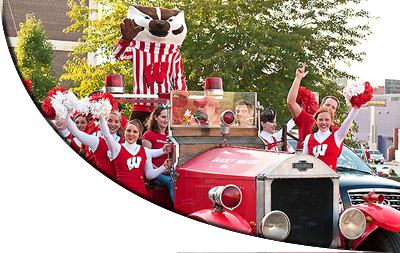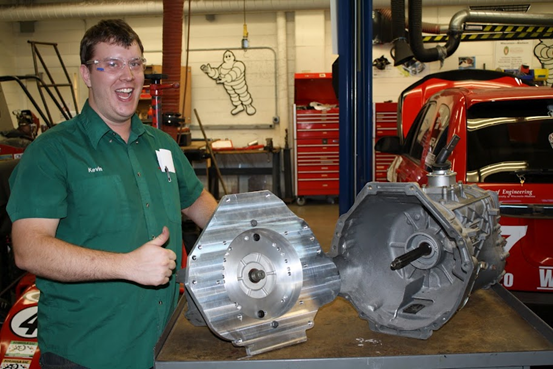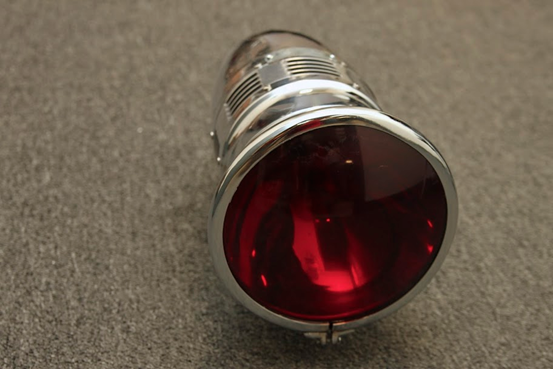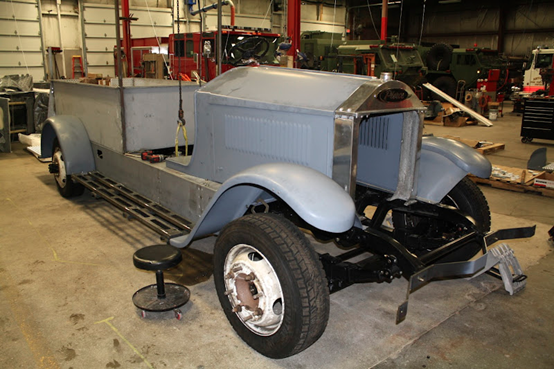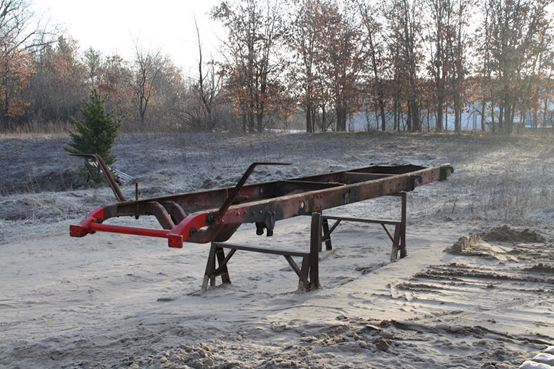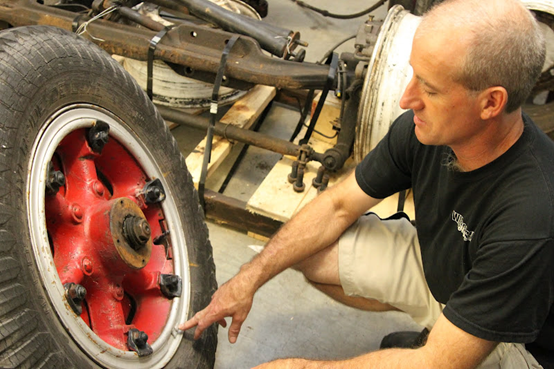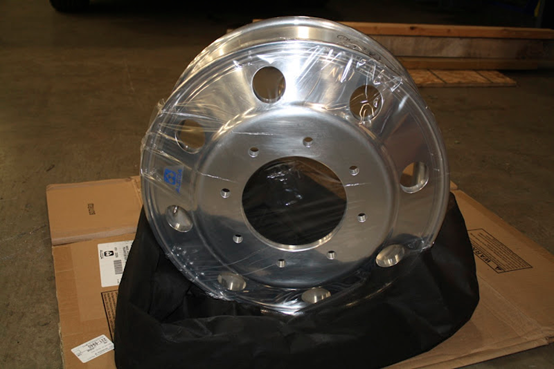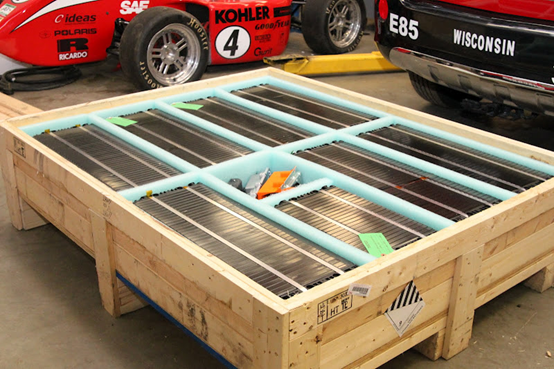
| Home >>Bucky Wagon>> News | ||||||
September 19, 2011The body of the Bucky Wagon has only recently started to look like something even close to the iconic fire wagon, mostly because restoring the body has been a tedious, time-consuming process. First, the original body went to the Madison College body shop, where rusted-on bolts had to be ground off to free each piece from the body for restoration. With the wagon stripped down to its skeleton, the frame headed to Eau Claire-based EnviroTech to be sandblasted and powder-coated, banishing rust from the renovated wagon’s undercarriage.Finally, the wagon headed to Pierce Manufacturing in Appleton, where it remains while Pierce engineers–mostly working in between other projects, even on weekends in some cases–have stripped each piece of the wagon of its original paint and primed them all for a fresh coat of Badger red. They’ve also reconstructed the parts of the body that were either beyond repair or not designed for the rigors of carrying around the Spirit Squad, leaving a pile of discarded Bucky Wagon parts in their junk heap.Now, the wagon awaits its final coat of paint. Until then, take a look at photos of the vanilla-flavored body, primed and ready to show its school colors. |
| Building the Bucky Wagon: Tires and Rims |
September 13, 2011
Not everything about the Bucky Wagon could be faithfully brought over to the all-electric version. Most of the changes won’t be visible–the old motor, brakes and steering mechanisms had to go for obvious reasons, but their disappearance will not be immediately apparent to Badger fans watching the wagon glide by. But one necessary cosmetic change is being made to the wheels, specifically the wagon’s rims.
The original Bucky Wagon had split rims, the type that you might see on a tractor, with an outer rim supporting the tire and an inner rim that connects the axle and the tire. This makes tire changes possible without removing the entire wheel assembly, but the design of the rim places a tremendous amount of pressure on the bolts holding rims together. Changing split rims requires a level of experience that students working on the wagon might not have. And then there’s the small point that having students work with a rim nicknamed “the widow maker” probably wouldn’t be popular with parents and administrators.
Swapping the cumbersome old rims for new rims from Alcoa became a matter of necessity–they may not look like something that came off the assembly line in 1931, but the custom-made rims look pretty sharp just the same.
Glenn Bower explains the dangers of the old split rim design.
Shiny custom-made aluminum rims, courtesy of Alcoa.
| Building the Bucky Wagon: Batteries Included |
September 1, 2011
It’s been a few months since the last update on our intrepid Bucky Wagon.
Frankly, it’s in pieces.
But trust us,, that’s a good thing–the entire body has been disassembled to be primed and repainted a glorious Badger red. The frame has been rebuilt and powder-coated. New pieces of the wagon arrive in the garage every week, as Glenn Bower and his students work tirelessly getting the Bucky Wagon ready for its debut at this year’s homecoming.
We’re going to be highlighting these pieces on the blog each week as the big day approaches. When the completed wagon finally comes together, expect a sneak peak at the big reveal.
First up, we’re talking about power: the lithium-ion battery pack donated by A123 Systems—something that’s definitely new to the old fire engine. The huge battery array in the Bucky Wagon will be regulated by a controller that ensures the batteries are depleted evenly and at a safe temperature–warm so that the batteries provide the optimal electrical output, but not so hot as to give Bucky second-degree burns in his seat. The batteries provide enough juice to get the wagon up to a planned top speed of around 30 MPH.
Check back for more updates on the engine, the new tires and more as the wagon comes together.
Lithium-ion batteries that will power the all-electric Bucky Wagon.
